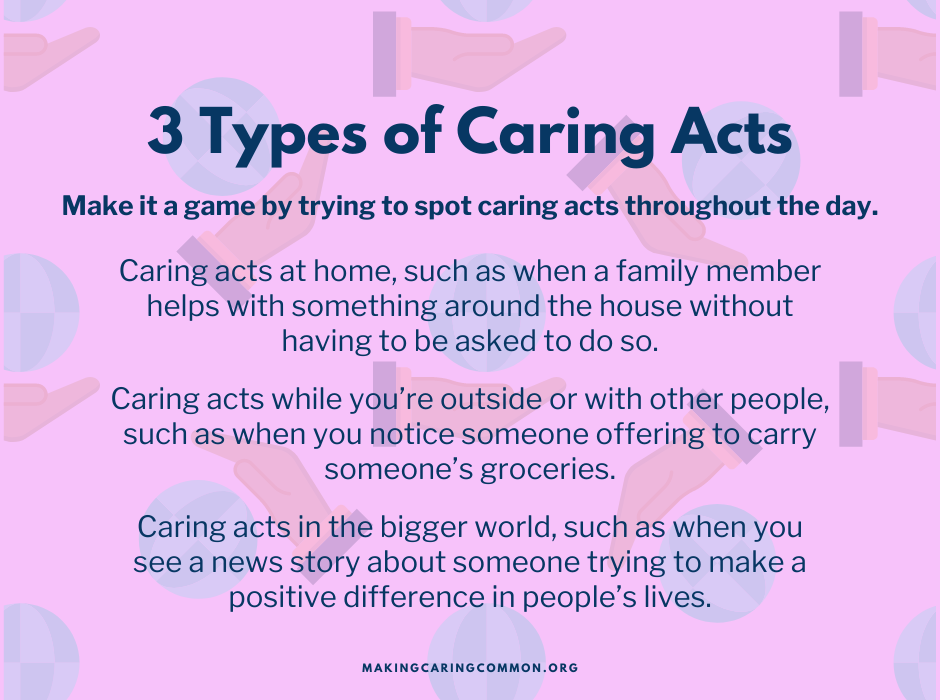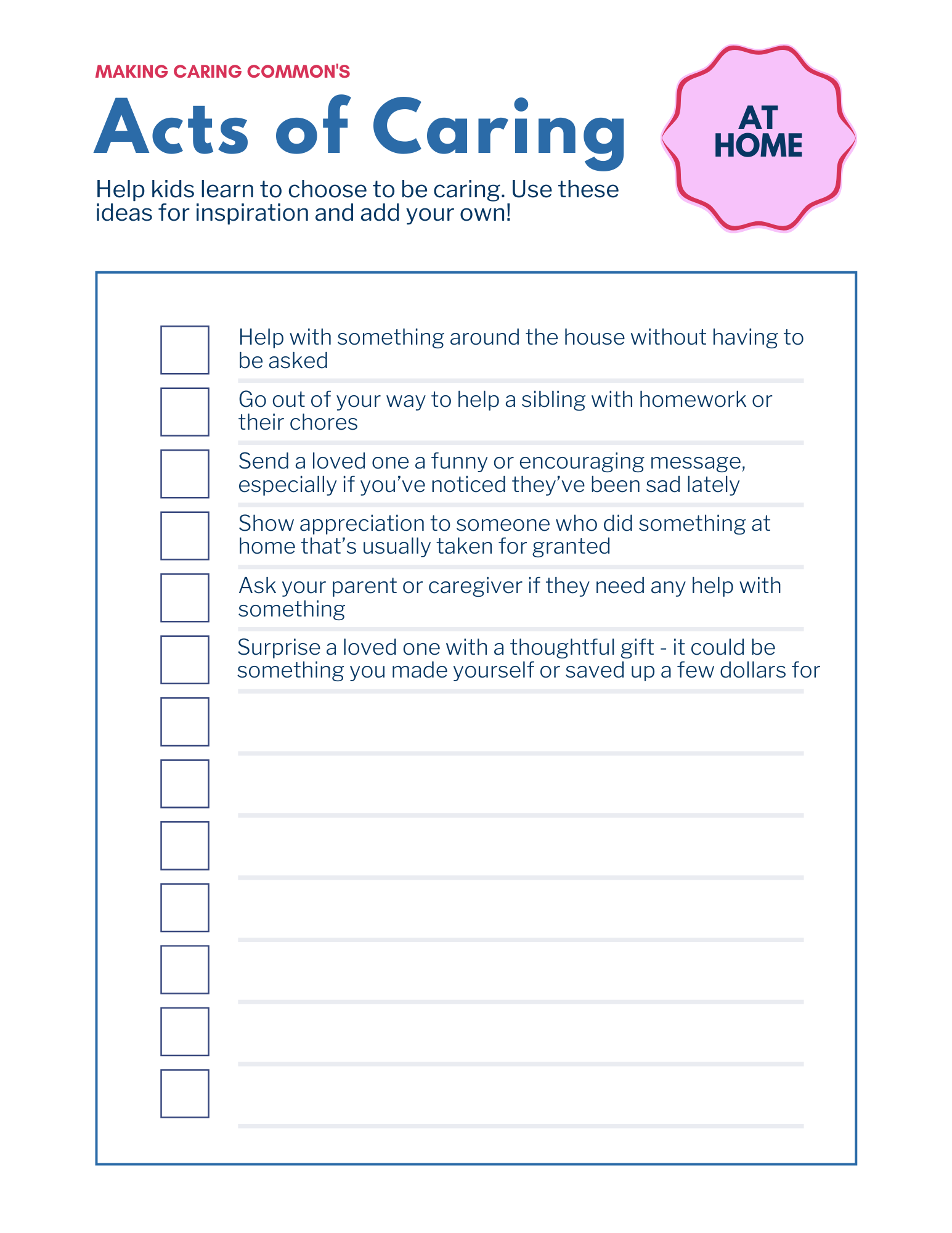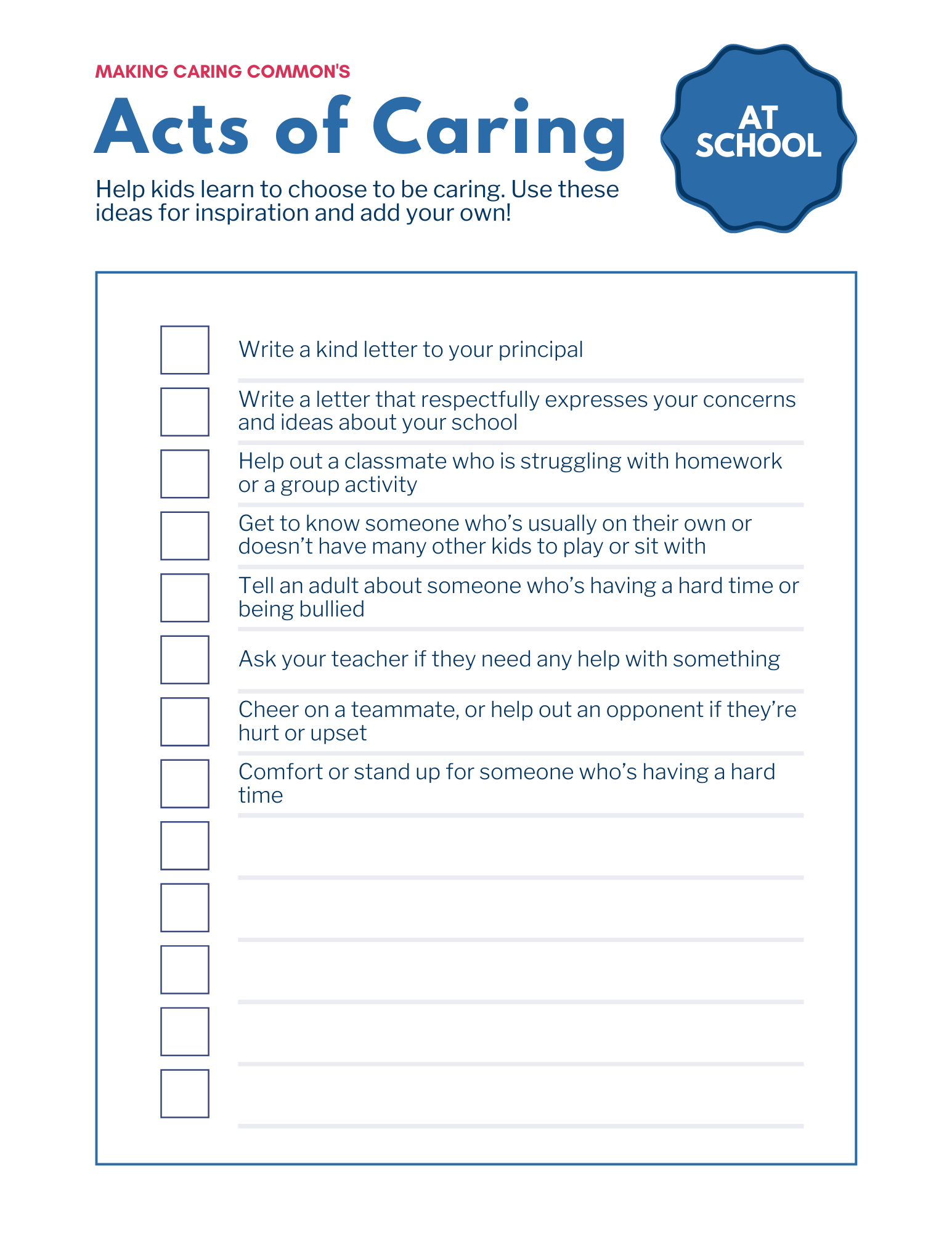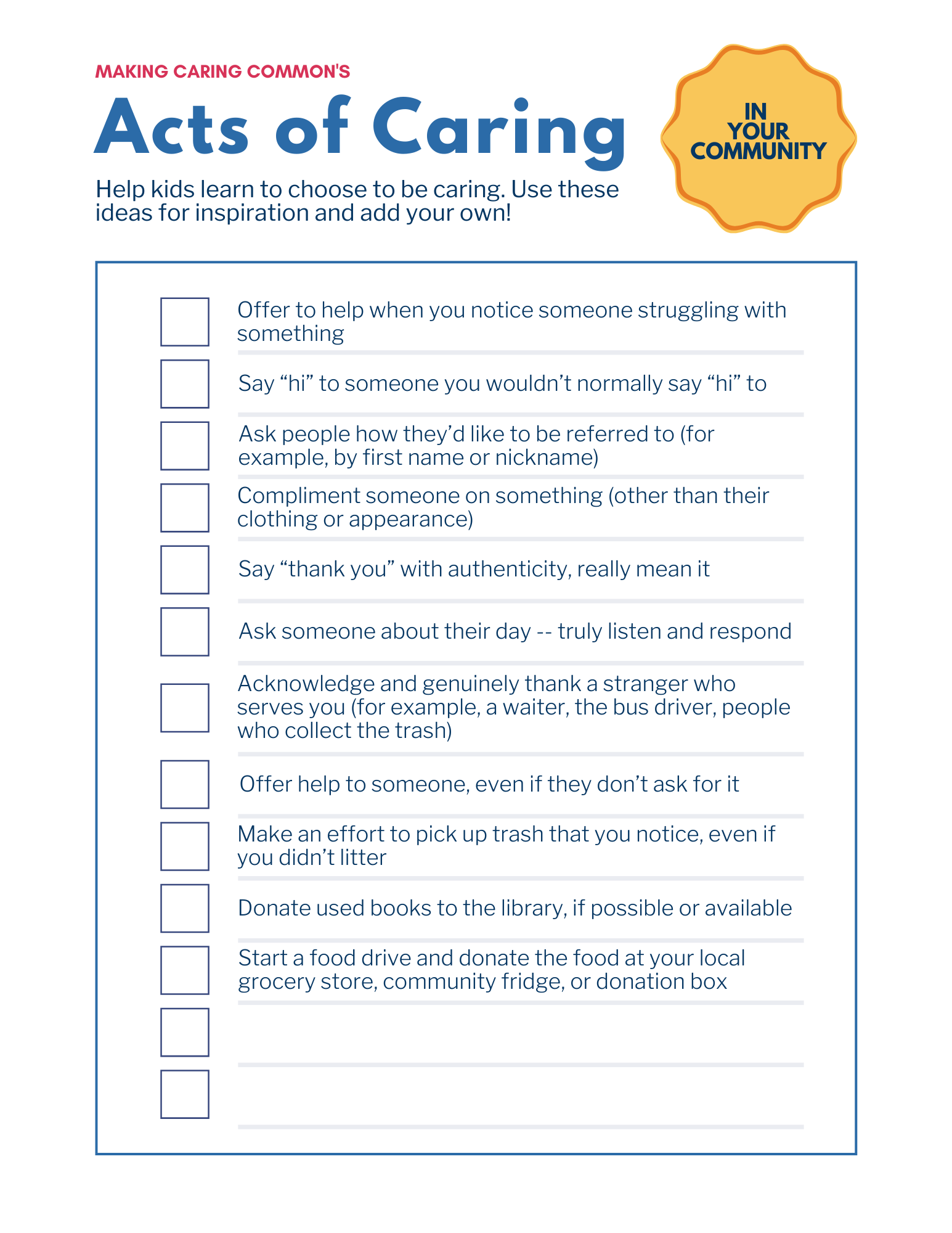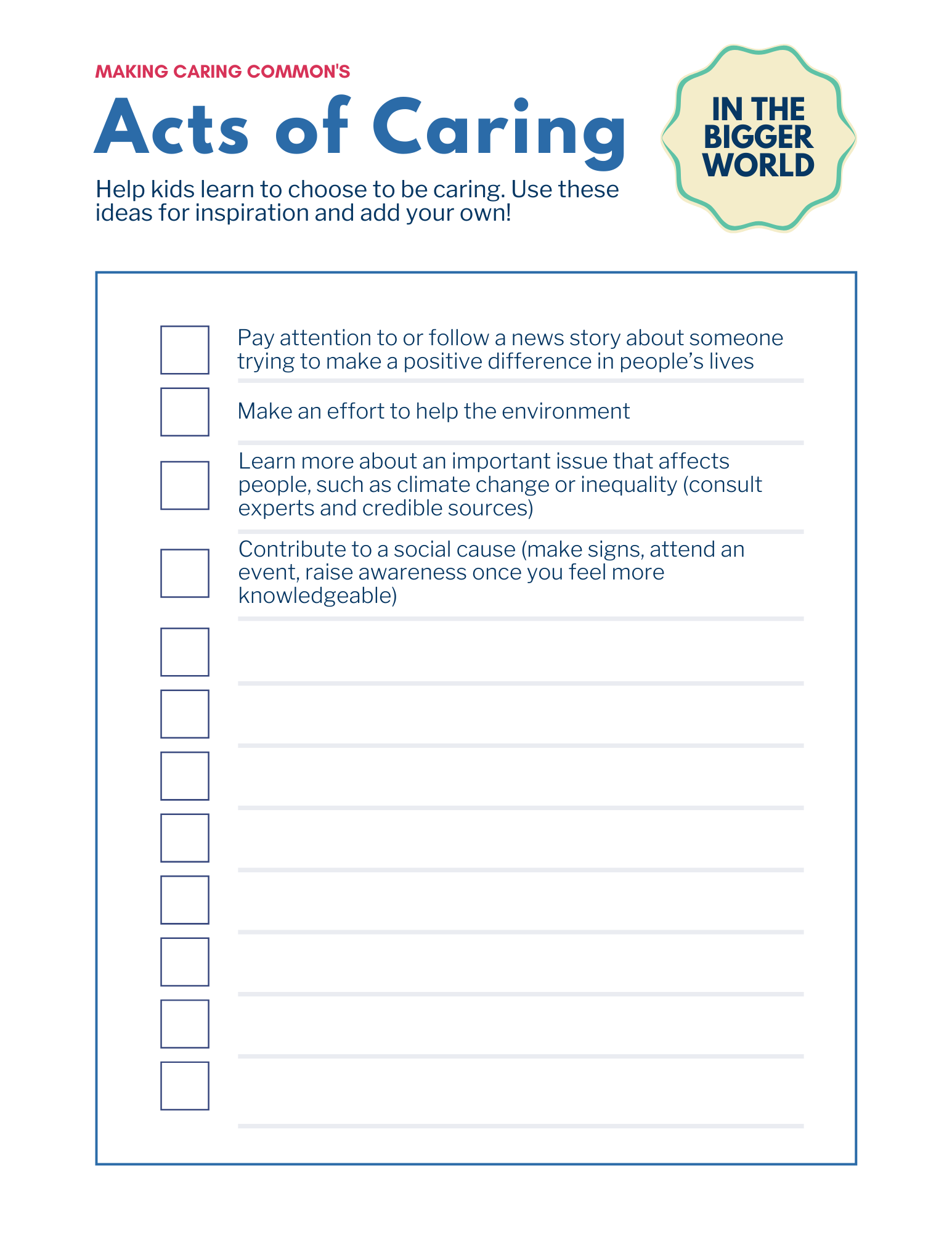How to Show Empathy Through Caring
It’s one thing to say you understand and care about the feelings and perspectives of others, it’s another thing entirely to show it. The good news is, opportunities to show caring are everywhere: in how we talk to and treat people every day, in how much effort we put into our friendships and relationships, and in how we think about the world and our role in making it better. Adults can help shape kids’ ability to care and show their caring by drawing attention to everyday moments and encouraging caring acts. In order for caring acts to really “stick,” we need to periodically praise kids’ character rather than only their behavior. For example, occasionally saying things like, “you’re the kind of person who really likes to help people,” instead of just saying, “thanks for helping,” can make a big difference in how kids come to see themselves as caring people!
Below are four key steps for adults to help kids see themselves as caring people.
1. Notice caring moments
Keep a lookout for caring things your family or other people — including strangers — do throughout the day. Make it a game by trying to spot different types of caring acts (see our examples below). Kids can keep track and tell you what they spotted at the end of the day. Whoever spotted the most caring acts by the end of the day gets to pick the movie next time you have a movie night—or whatever you enjoy doing together.
Three types of caring acts
2. Have kids choose to be caring
Caring is about genuinely valuing and treating others in ways that are meaningful and valuable to them. Caring acts bind our families and friendships, and they enable us to support and protect others, our communities and the common good.
If you have a printer you can download our free Acts of Caring cards, or simply jot down your own ideas/examples of Acts of Caring on a piece of paper. You can choose one of the cards and see how many you can all do together throughout a given week (preferably, adding to the list as you go). You can also create a mosaic at home by writing down each caring act on a sticky note and papering an entire wall! Seize opportunities to talk to kids about different ways in which they can choose to be caring.
3. Praise caring periodically, and discuss its effects on others
Praise kids periodically for being caring in order to help them see themselves as caring individuals. Adjust your language to focus on the importance of being a caring person rather than simply focusing on the caring act. For example, you might say, “You are such a great helper” or “You are such a caring person.” It’s also important to emphasize the positive effects of caring on others and how that makes other people feel more understood, valued, seen, or heard. For example, you could say, “See that nice thing you did for …. [explain why that nice thing helped them, or why they might feel better, even if they don’t show it].
How to praise caring
tip for parents: It’s important not to go overboard praising kids, especially for things that are already expected of them, like doing chores or saying thank you. It’s also helpful to explain that we might not always see the positive effects of caring--people might not show their appreciation right away, or our acts of caring might not amount to much right away. But hopefully, over time, our individual acts of caring will lead to more caring in the world!
4. Make it a habit
Try to talk about and encourage caring acts often - and how they affect others positively. The aim is to prioritize and “normalize” caring so it becomes a regular part of how we relate to one another as people. You can use simple questions, like “Have you noticed someone being sad or upset lately? Is there something caring you could do for them?”
Encourage kids to talk about and show acts of caring
Overview
For: Parents, Caregivers, and Adults who engage with kids
Ages: 7-10
Resource Type: Activity
Additional Information
The Science Behind These Recommendations
Caring or aspects of being a caring person have been researched extensively. Here are key resources we consulted - in addition to experts and parents - that are behind the recommendations shared on this page:
Bryan, C. J., Master, A., & Walton, G. M. (2014). "Helping" versus "being a helper": Invoking the self to increase helping in young children. Child Development, 85(5), 1836-1842. [Abstract]
Grusec, J. E., & Redler, E. (1980). Attribution, reinforcement, and altruism: A developmental analysis. Developmental Psychology, 16(5), 525-534. [Abstract]
Hardy, S. A., & Carlo, G. (2011). Moral identity: What is it, how does it develop, and is it linked to moral action? Child Development Perspectives, 5(3), 212-218. [Abstract]



